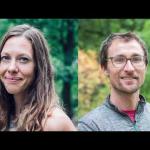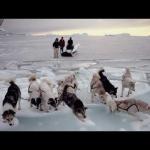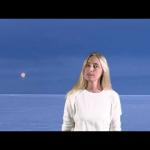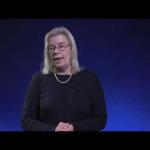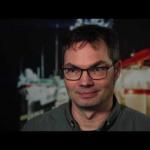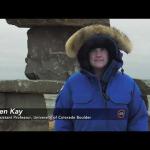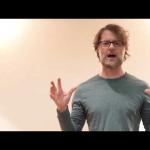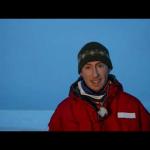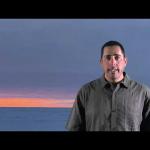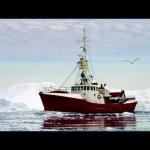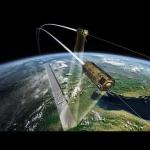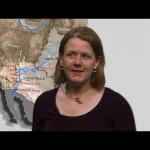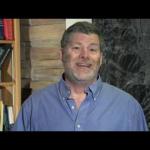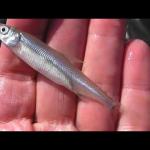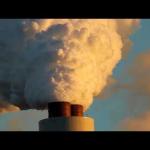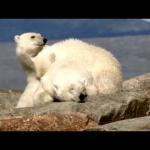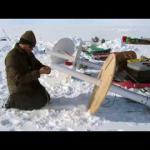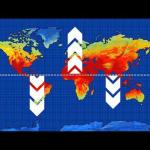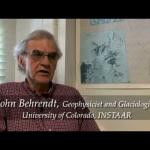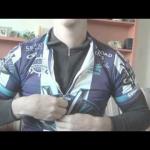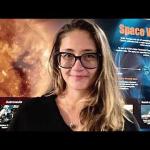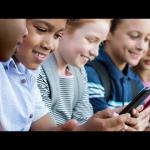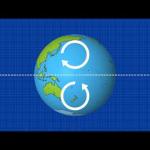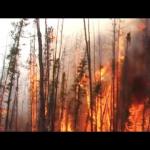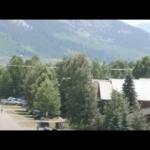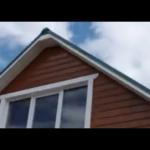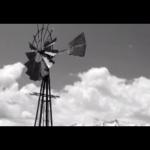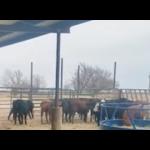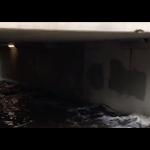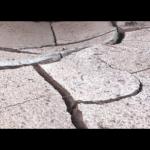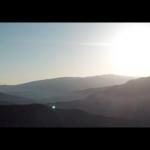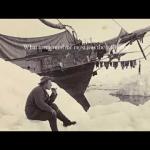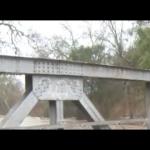Earth Science Stories
This video is part of a collection - “Frozen in the Ice: Exploring the Arctic." Check out the MOSAiC page for more details.
In this video, Drs. Anne Gold and Matthew Shupe conclude the series "Frozen in the Ice: Exploring the Arctic" with a summary of the course's major lessons.
Science Content Video
This video is part of a collection - “Frozen in the Ice: Exploring the Arctic." Check out the MOSAiC page for more details.
In this specific lesson, Dr. James Overland discusses how sea ice loss can cause major changes in the Arctic climate — and more specifically, in the polar jet stream.
Science Content Video
This video is part of a collection - “Frozen in the Ice: Exploring the Arctic." Check out the MOSAiC page for more details.
In this specific lesson, Dr. John Walsh discusses how climate change is apparent throughout the Arctic (air, land, ice, and ocean) and that these changes are already impacting humans, wildlife, and the environment.
Science Content Video
This video is part of a collection - “Frozen in the Ice: Exploring the Arctic." Check out the MOSAiC page for more details.
In this specific lesson, Dr. Marika Holland will teach you about climate models. She also asks the question: How will climate extremes and environmental changes in the Arctic reverberate around the world?
Science Content Video
This video is part of a collection - “Frozen in the Ice: Exploring the Arctic." Check out the MOSAiC page for more details.
In this specific lesson, Dr. Gunilla Svensson explains how important Earth system models are to understanding where both global and Arctic climate systems are headed. You'll also learn about the key role MOSAiC's modeling team plays in the expedition.
Science Content Video
This video is part of a collection - “Frozen in the Ice: Exploring the Arctic." Check out the MOSAiC page for more details.
In this specific lesson, Dr. Clara Hoppe sheds light on the small but mighty phytoplankton! You'll learn about MOSAiC's special interest in primary production, carbon export, and groundbreaking data scientists expect to glean from the expedition.
Science Content Video
This video is part of a collection - “Frozen in the Ice: Exploring the Arctic." Check out the MOSAiC page for more details.
In this specific lesson, Dr. Hauke Flores describes sea ice as an important driver in Arctic food webs. You'll learn about the serious threats climate change poses to biodiversity and key species dependent on ice cover.
Science Content Video
This video is part of a collection - “Frozen in the Ice: Exploring the Arctic." Check out the MOSAiC page for more details.
In this specific lesson, Dr. Melinda Webster explains sea ice formation. You'll learn about its role in driving ocean circulation, different shapes the ice can take on, and what affects sea ice growth vs. reduction.
Science Content Video
This video is part of a collection - “Frozen in the Ice: Exploring the Arctic." Check out the MOSAiC page for more details.
In this specific lesson, Drs. Jennifer Kay and Ariel Morrison introduce positive and negative albedo feedbacks that are important to the Arctic climate system (and polar bears!).
Science Content Video
This video is part of a collection - “Frozen in the Ice: Exploring the Arctic." Check out the MOSAiC page for more details.
In this specific lesson, Dr. Matthew Shupe explains the significance of clouds in the Arctic system and how they play important roles in precipitation, energy transfer, and climate modeling.
Science Content Video
This video is part of a collection - “Frozen in the Ice: Exploring the Arctic." Check out the MOSAiC page for more details.
In this specific lesson, Dr. Chris Cox will teach you about Earth's atmosphere. You'll learn about its chemical composition, temperature structure, energy fluxes, and how MOSAiC scientists measure the atmosphere's energy budget.
Science Content Video
This video is part of a collection - “Frozen in the Ice: Exploring the Arctic." Check out the MOSAiC page for more details.
In this specific lesson, Dr. John Cassano describes the role of the Arctic in the Earth's energy budget and climate system.
Science Content Video
This video is part of a collection - “Frozen in the Ice: Exploring the Arctic." Check out the MOSAiC page for more details.
In this specific lesson, Dr. Matthew Shupe broadly defines MOSAiC. From the very first expedition of Fridtjof Nansen to present day, Arctic research remains at the forefront of environmental science and developments in our world's changing climate.
Science Content Video
AWI's Thomas Krumpen discusses how scientists use satellite information to identify ice floes in the Arctic Ocean.
Science Content Video
CIRES' Anne Gold delivers a lecture on the physical geographic overview of the Colorado River Basin and the legal and political aspects of water management in the west. This is part of the Water in the Western US lecture series.
Science Content Video
This video serves as an introduction to the Water in the Western US lecture series. The instructors Anne Gold and Eric Gordon explain the importance of learning about water in the Western United States.
Science Content Video
In this video, Dr. Paul Lander from the University of Colorado Boulder gives a lecture on the history of two important dams: Hoover and Glen Canyon. This is part of the Water in the Western US lecture series.
Science Content Video
Peter Goodwin and Phil Isenberg of the Delta Stewardship Council gave this lecture on the story of the California Bay Delta. They discuss complex management issues with California's water supply and more. This video is part of the Water in the Western US project.
Science Content Video
This peer-reviewed educational video explains human-caused climate change including the greenhouse effect.
Science Content Video
This peer-reviewed educational video introduces feedbacks that are important in the Arctic climate system.
Science Content Video
This peer-reviewed educational video describes sea ice and land ice processes that are unique to polar regions.
Science Content Video
What is wind, and what causes it? Why are wind patterns different in various parts on Earth? In this video, we explain how pressure systems generate the movement of air, we discuss the impacts that surface roughness and daily cycles of heating and cooling have on wind speed and how the Coriolis force steers the global wind circulation.
Science Content Video
This video is part of the Polar Visions series on climate change. This video gives a short overview on the history of the poles, including the exploration of Antarctica.
Science Content Video
The conclusion to the Polar Visions series interviews citizens and climate scientists about how we can all make a difference in our world and slow climate change.
Science Content Video
CIRES scientist Dr. Alessandra Pacini explains what space weather is, how it affects us here on Earth.
Science Content Video
Join Dr Rick Saltus to learn about citizen science with CrowdMag. Everyone is invited to use your smartphone to measure magnetic fields around you and send your data to scientists.
Science Content Video
What is wind, and what causes it? Why are wind patterns different in various parts on Earth? In this video, we explain how pressure systems generate the movement of air, we discuss the impacts that surface roughness and daily cycles of heating and cooling have on wind speed and how the Coriolis force steers the global wind circulation.
Science Content Video
Megan Cattau, Postdoctoral Research Associate at the Earth Lab at University of Colorado Boulder, discusses wildfire in Colorado for the HEART Force project.
Science Content Video
How do wind turbines work? How can the wind’s kinetic energy be converted into electrical energy? In this video, we discuss the design of wind turbines, the basic physics behind the electricity production and what criteria are being used to locate wind farm by giving different examples from across the US.
Science Content Video
Aimee Voth Siebert, Behavior Health and Inclusion Worklead at the Colorado Department of Public Health, describes what resilience looks like in the health and social sector in Colorado.
Science Content Video
Alison George, Housing Director for the Colorado Department of Local Affairs, describes what resilience looks like in the housing sector in Colorado.
Science Content Video
Kate Busse (Local Resiliency Program Manager) and Rob Pressly (Resiliency Program Manager) with the Colorado Resiliency Office at the Colorado Department of Local Affairs describe the Colorado Resiliency Framework.
Science Content Video
Danielle Lendriet, Regional Coordinator and Analyst at the Colorado Office of Economic Development and International Trade, describes what resilience looks like in the economic sector in Colorado
Science Content Video
Jeff Lukas, a scientist at the Western Water Assessment, discusses flooding in Colorado for the HEART Force project.
Science Content Video
Doug Kluck, the Regional Climate Services Director at the National Oceanic and Atmospheric Administration, discusses drought in Colorado for the HEART Force Project.
Science Content Video
Kevin Houck, Chief of Watershed and Flood Protection at the Colorado Water Conservation Board, describes what resilience looks like for watersheds and natural resources in Colorado.
Science Content Video
This video is part of a collection - “Frozen in the Ice: Exploring the Arctic." Check out the MOSAiC page for more details.
In this specific lesson, Jonathan Griffith tells the story of Fridtjof Nansen's trailblazing journey through the Arctic in the 1893 Fram Expedition.
Science Content Video
Lizzie Kemp, Resilience Program Coordinator at the Colorado Department of Transportation, describes what resilience looks like for the infrastructure sector in Colorado.
Science Content Video
Waverly Klaw, Hazards and Land Use Planner with the State of Colorado Department of Local Affairs, describes what resilience looks like for the community sector in Colorado.
Science Content Video
